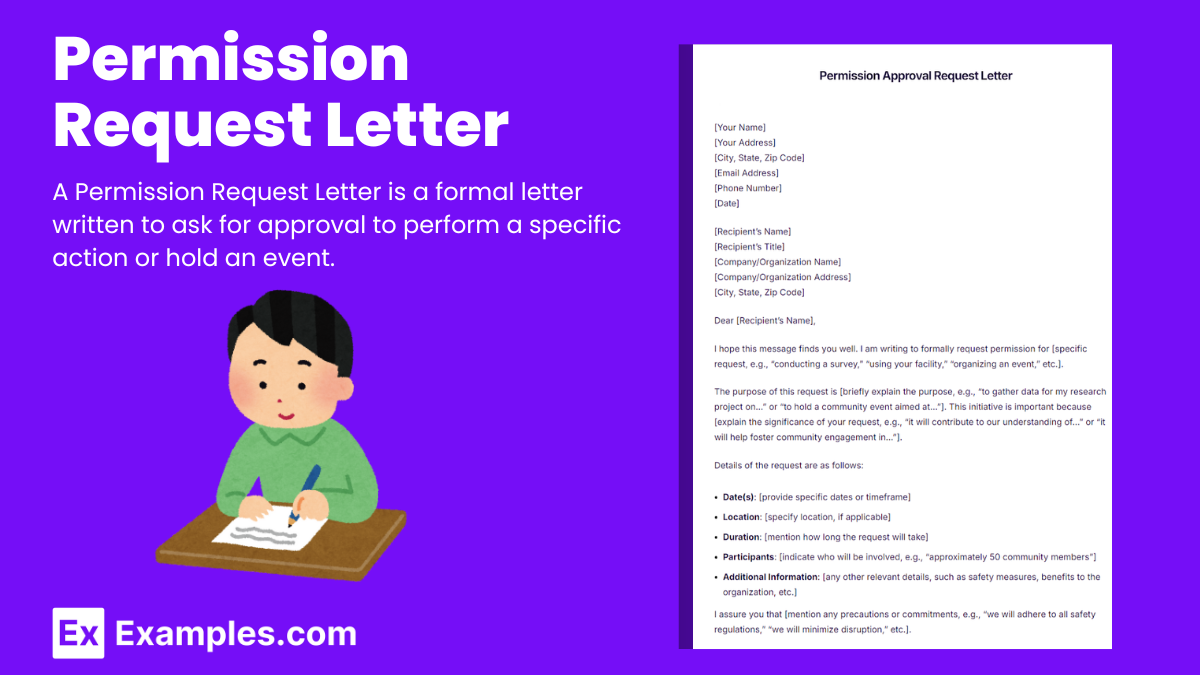14+ Permission Request Letter Examples
Navigating the nuances of professional etiquette becomes crucial when you’re seeking approval for various activities or access to resources. A well-structured Permission Request Letter is your key to opening doors, whether it’s for event planning, photography, or accessing confidential information. Our guide provides you with the blueprint to craft a compelling request, ensuring you communicate with courtesy and clarity. Dive into the essentials of creating a persuasive letter that stands out and garners the green light from authorities.
What is Permission Request Letter?
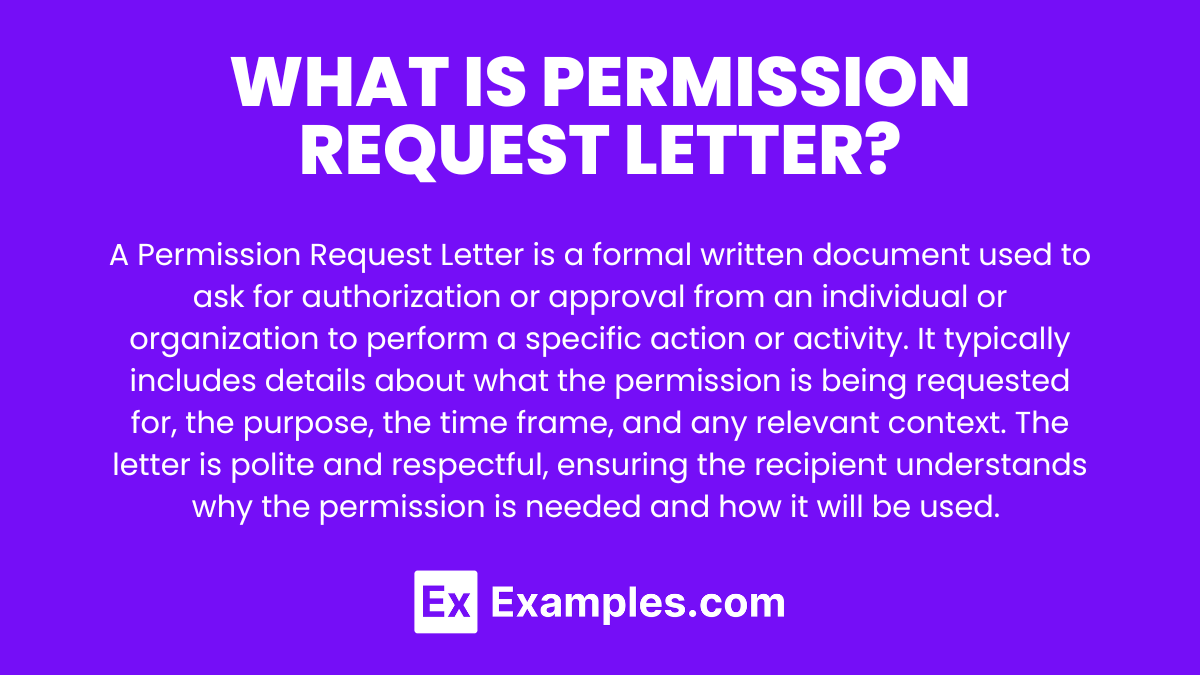

Download Permission Request Letter Bundle
Permission Request Letter Format
Opening Remarks
- Greeting Start with a formal greeting, addressing the person or authority you are requesting permission from.
- Example: “Dear Sir/Madam,” or “Respected Principal,”
Introduction
- Purpose Clearly state the reason for the letter, and why you are requesting permission.
- Example: “I am writing to formally request your permission to [state your request].”
Request Details
- Specific Request: Clearly mention what you are seeking permission for.
- Example: “I kindly request your permission to [action/event] at [location/event].”
Reasons for Request
- Justification: Provide a brief explanation of why the permission is needed.
- Example: “This event is important because [reason] and will benefit [specific group/community].”
Acknowledgment
- Gratitude: Show appreciation for considering your request.
- Example: “I would be grateful if you could kindly consider my request.”
Closing Remarks
- Closing Statement: End with a polite and respectful closing, reaffirming your appreciation.
- Example: “Thank you for your time and consideration of this request.”
Signature
- Signature: End the letter with a proper sign-off.
- Example: “Sincerely, [Your Name]”
Short Permission Request Letter Example
Dear Sir/Madam,
I am writing to request permission for hosting a community event at the town hall on [specific date]. The event aims to bring together local residents to discuss important community issues.
This event is important because it will foster community collaboration and provide valuable insights for local development. The event will benefit the entire neighborhood by encouraging open discussions and enhancing our sense of community.
I would be grateful if you could kindly consider my request and grant the necessary approval.
Thank you for your time and consideration of this request.
Sincerely,
[Your Name]
Permission Approval Request Letter
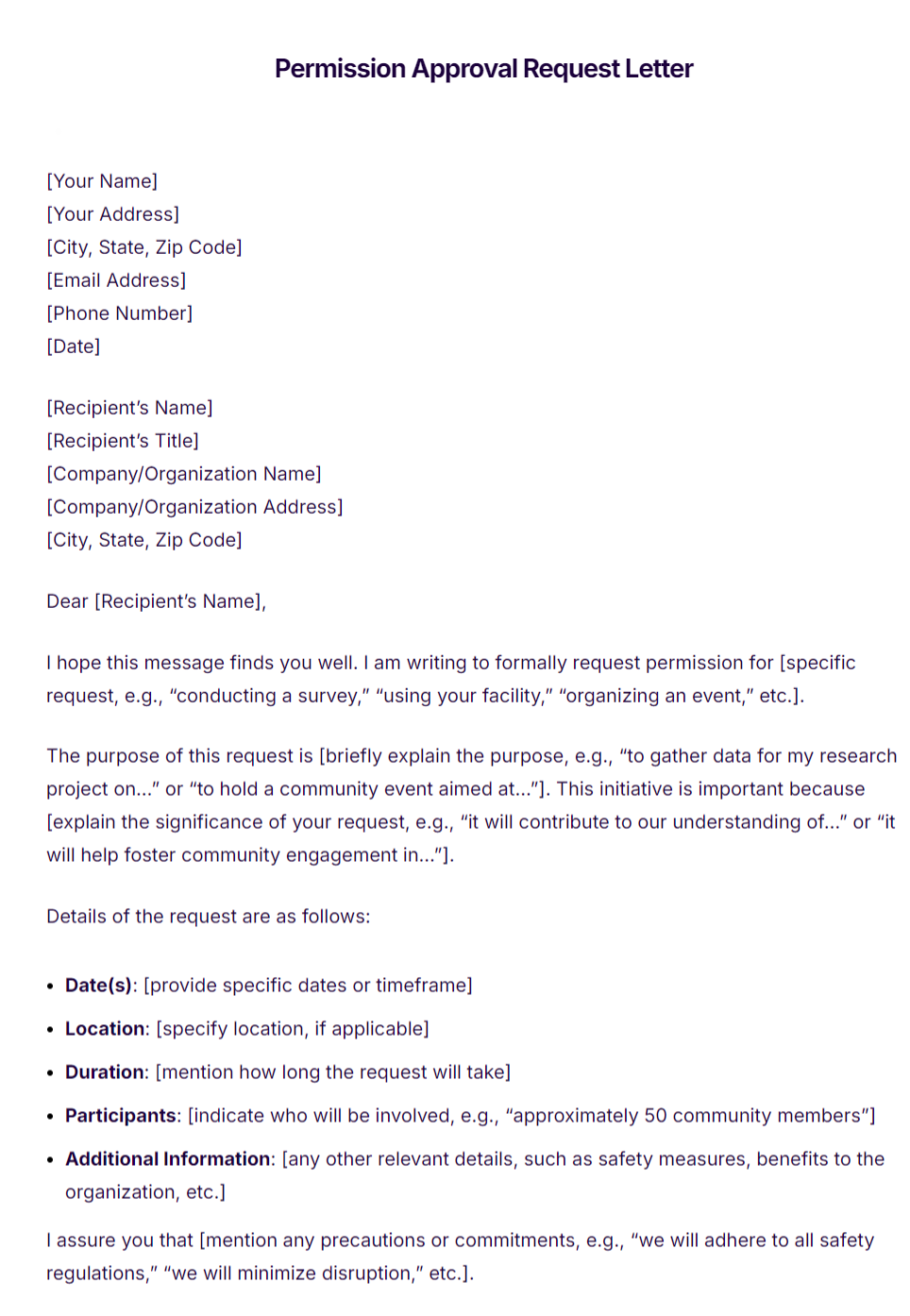
Permission Request Letter For Remedial Class
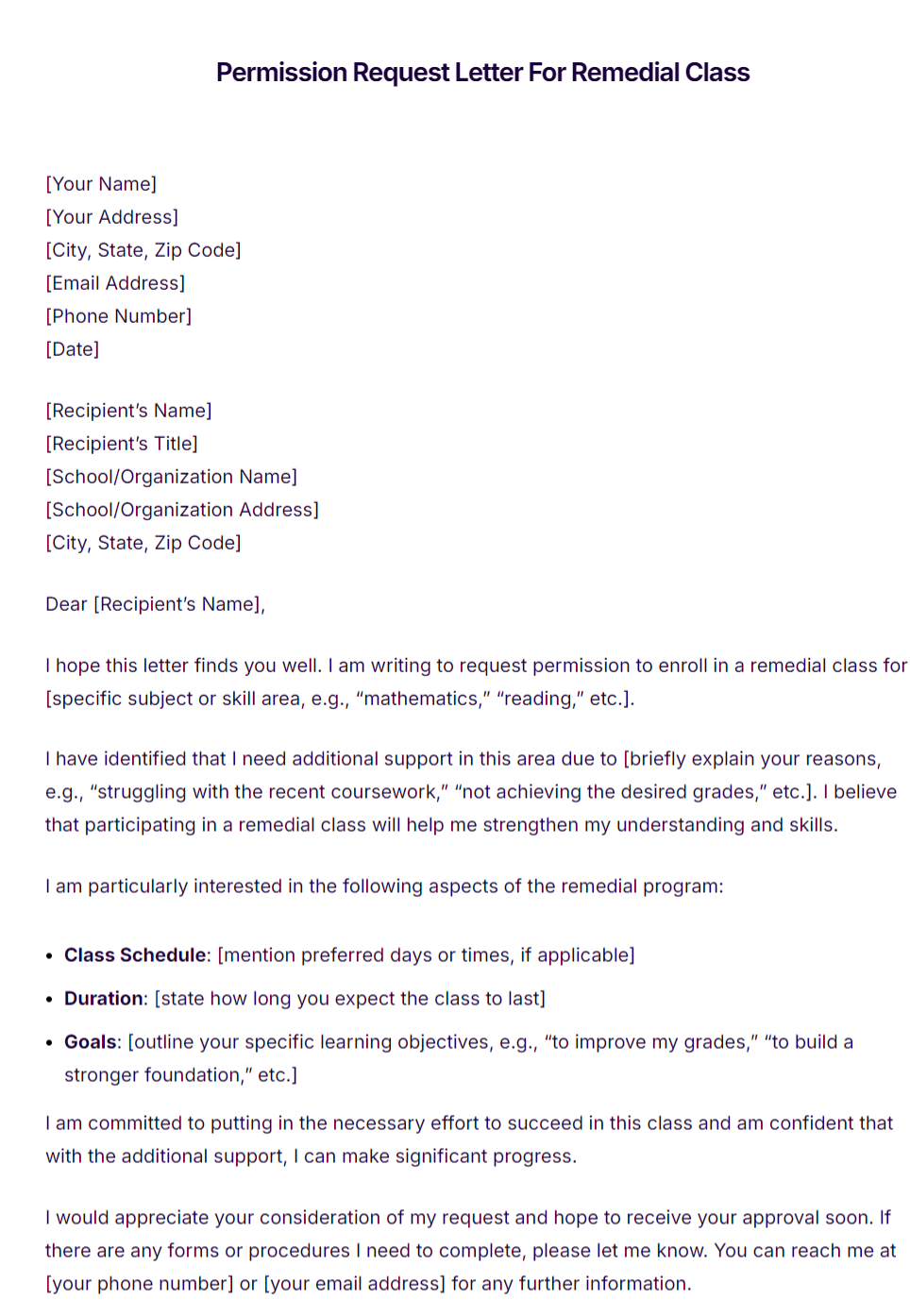
Permission Early Leave Request Letter
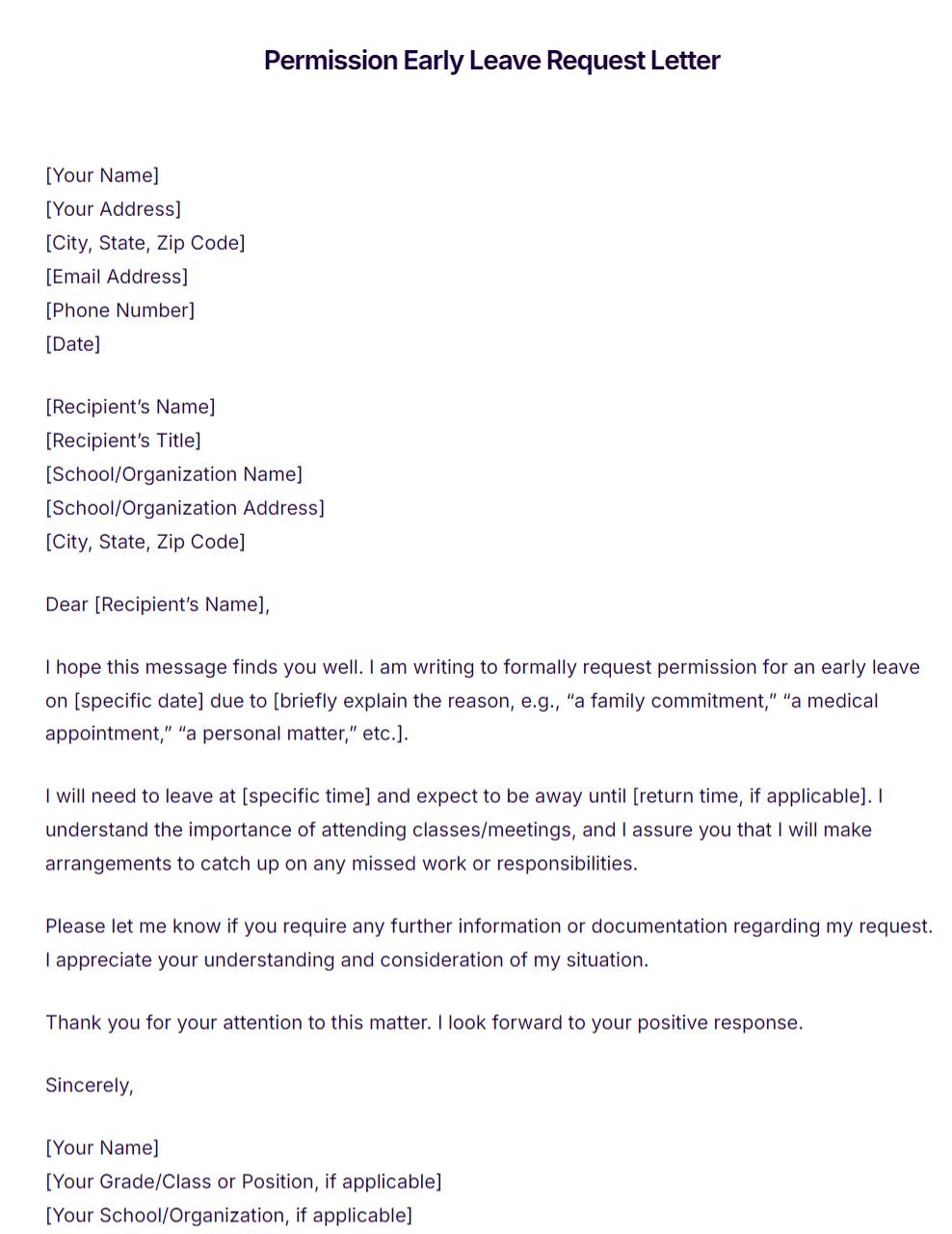
More Permission Request Letter Examples and Samples
Permission Request Letter Examples
1. Office Work Permission Request Letter
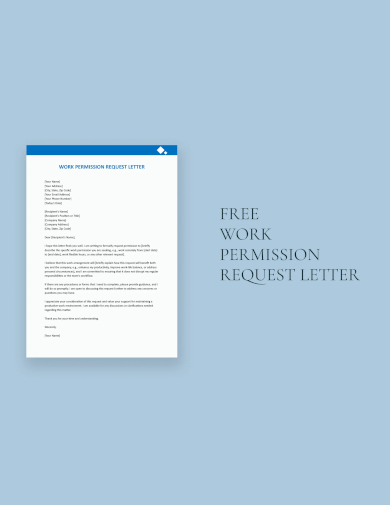
2. Request Permission Letter Format Template
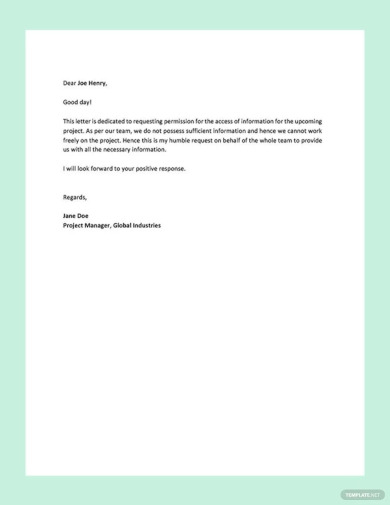
3. Travel Permission Request Letter Sample
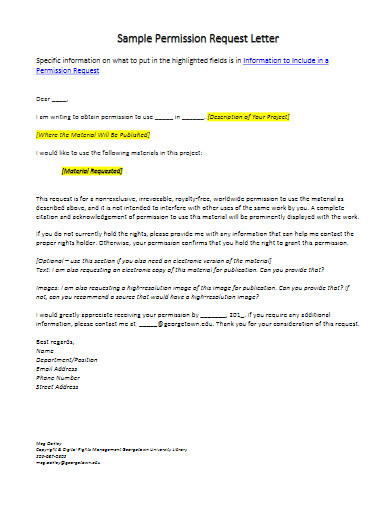
4. Student Letter of Permission Request

5. Landowner Permission Request Letter
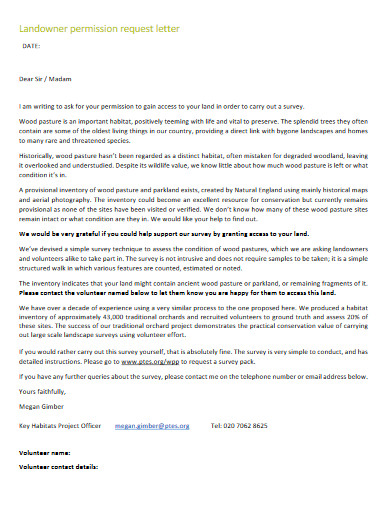
6. Sample Authorization Request Permission Letter
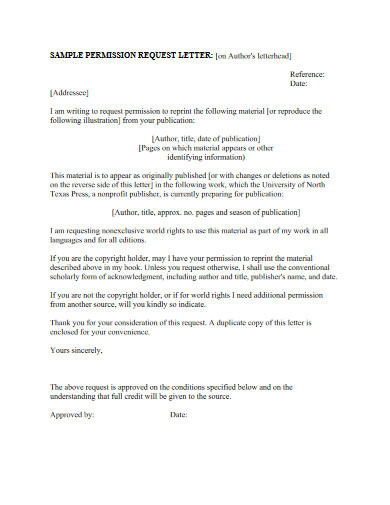
7. Faculty Job Permission Letter of Request
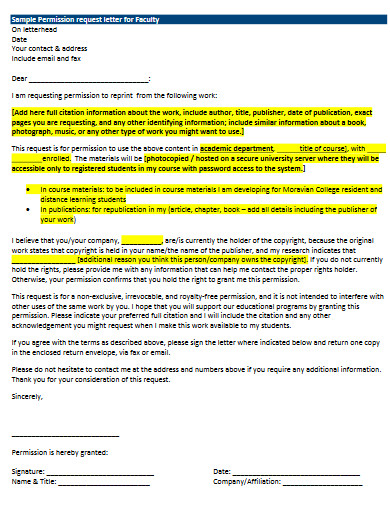
How to Write Permission Request Letter?
A permission request letter is a formal document used to ask for approval to perform an activity, access information, or use resources. Here’s a brief explanation of how to write it:
Salutation
Begin with a formal greeting such as “Dear [Recipient’s Name].”
Purpose
:Clearly state the reason for writing, mentioning the specific permission you are requesting.
Details
:Provide details about the activity or use, including dates, locations, or any other relevant information.
Justification
:Explain why the request is important or necessary.
Closing
:Express gratitude for their consideration and offer to provide additional information if needed.
Signature
:End with a polite closing, such as “Sincerely,” followed by your name and contact details.
Tips for Permission Request Letter
Here are some key tips for writing an effective permission request letter:
- Use a polite and respectful tone: Start with a courteous greeting and maintain a respectful tone throughout the letter.
- Be clear and concise: Clearly state your purpose and the specific permission you are requesting.
- Provide necessary details: Include all relevant information (dates, locations, reasons) to help the recipient understand your request.
- Justify your request: Explain why the permission is important and how it benefits both parties if applicable.
- Include contact information: Provide your details for any follow-up or clarification.
- Express gratitude: End by thanking the recipient in advance for their time and consideration.
- Proofread: Ensure your letter is free from grammar and spelling errors for professionalism.
FAQS
1. How long should a Permission Request Letter be?
A Permission Request Letter should be concise and to the point, typically not longer than one page. Focus on the essential details without adding unnecessary information.
2. Can I follow up on a Permission Request Letter if there is no response?
Yes, you can send a polite follow-up letter or email if you don’t receive a response within the expected timeframe. Make sure to restate your request and inquire about the status of the permission.
3. Should I attach any documents to the Permission Request Letter?
If additional documentation supports your request, such as identification, event details, or copyright materials, it’s helpful to attach those documents for clarity.
4. Is it necessary to thank the recipient in a Permission Request Letter?
Yes, it’s courteous to thank the recipient for their time and consideration at the end of the letter. A polite tone can make your request more favorable.
5. How do I close a Permission Request Letter?
Close the letter with a polite and professional sign-off, such as “Sincerely” or “Thank you,” followed by your name, signature, and contact information.


